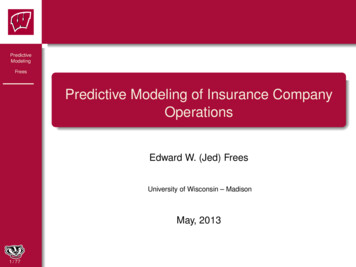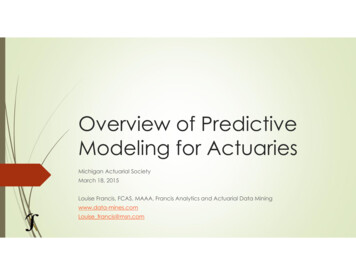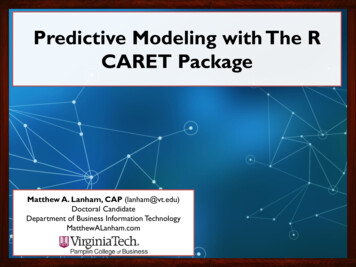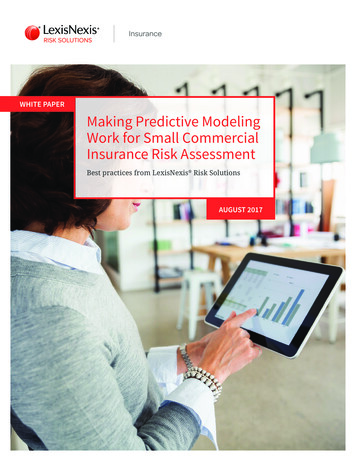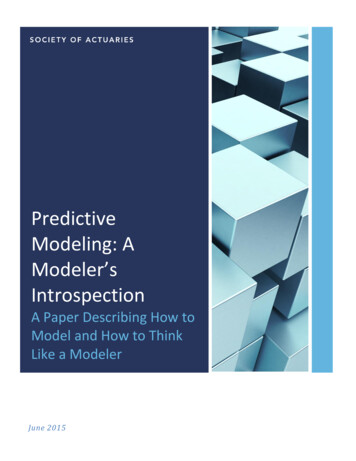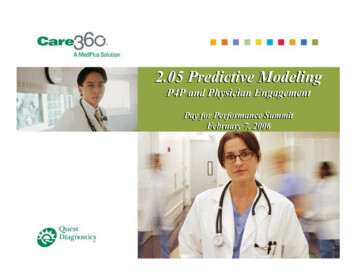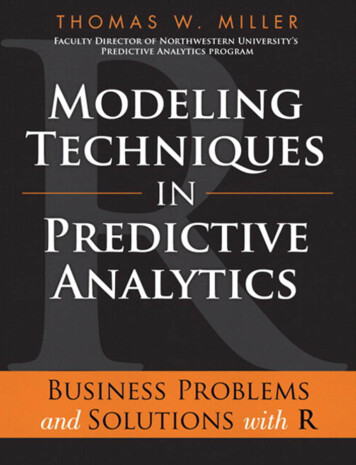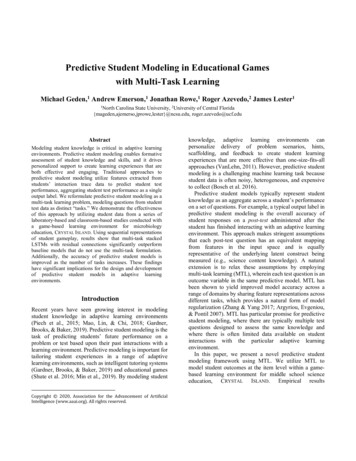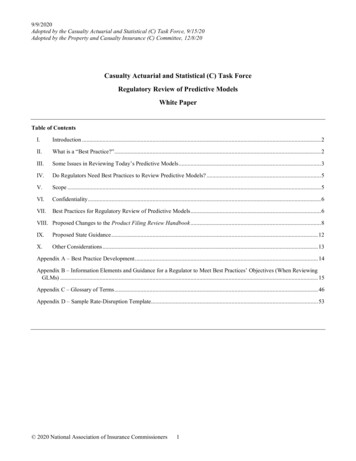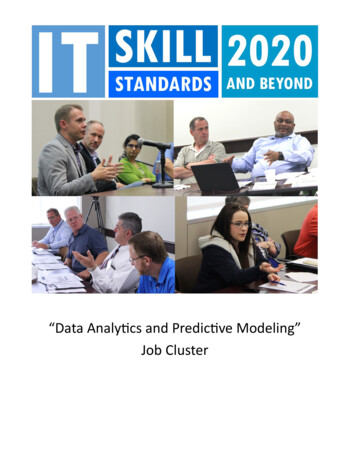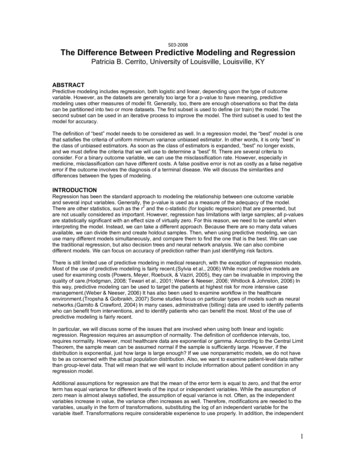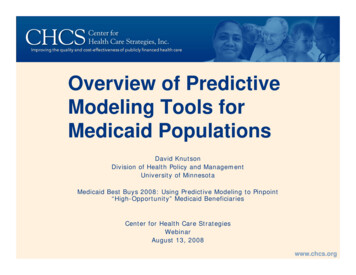
Transcription
Overview of PredictiveModeling Tools forMedicaid PopulationsDavid KnutsonDivision of Health Policy and ManagementUniversity of MinnesotaMedicaid Best Buys 2008: Using Predictive Modeling to Pinpoint“High-Opportunity” Medicaid BeneficiariesCenter for Health Care StrategiesWebinarAugust 13, 2008www.chcs.org
Overview Outline1. Introduction to predictive modeling2. Variables used in predictive modeling3. Criteria for choosing a predictive modelingapproach2
Predictive Modeling for Case Identification Predictive models (PM) combine risk factors to predictan individual’s future need for care, e.g., caremanagement PM are decision support tools that provide oneinformation source, among others, for identifying casesthat need special services or programs PM can also be used for program planning andevaluation3
Predictive Modeling for Case Identification Two types of prediction:1) Predicting an individual’s future medical expenditures2) Identifying individuals in a population who can benefitfrom a disease or care management intervention All PM software in the market classifies individuals byfuture cost categories, with the focus being on high-costindividuals Some PM tools add care gap logic (e.g., HEDIS, ACSadmissions) to identify cases that can most benefit fromcare management interventions or produce savings4
Predictive Modeling for Case Identification Typically use regression or data mining methods todevelop multi-variate models Predictive accuracy for case identification is usuallydefined as the:1) Proportion of individuals who were identified by PM, but were notactually a good fit for the intervention, i.e., false positives(specificity); and2) Proportion of individuals in the population who were actually agood fit, but were not identified by PM (sensitivity)5
Assessing Data Variables for Predictive Models Most PM tools rely on claims and enrollmentdata and include these variables as predictors: Age/Gender (always)Diagnosis codes (always)Prior cost (often)Utilization (often)Prescriptions claims as proxies for diagnoses (often)Care gap logic combines diagnoses with utilization(often) Some can use additional data: HRA/Functionalstatus (rarely)6
Assessing Data Variables for Predictive Models*VARIABLESPROSCONSAge/Gender Easy to obtain Reliable and valid Poor predictive value, but useful whencombined with other variablesPrescriptionClaims Predicts costs almost as well asdiagnoses (diagnosis proxy) Short claims lag Perverse incentive if used for provideror plan payment Requires frequent model updatesDiagnoses(claims) Best predictor of cost Required for care gap analysis Ambulatory coding inconsistent Long claims lagFunctionalStatus* Useful for care gap analysis andintervention planning Can be collected upon enrollment Only modest predictive performancewhen used alone Not universally or reliably assessed. Adds little predictive performancecombined with diagnosesUtilizationData Important for identifying care gaps andpotential cost savings Moderate improvement in predictiveaccuracy combined with diagnoses Perverse incentives if used forprovider or plan paymentPrior Cost Good stand alone predictor of future cost Adds modest improvement in predictionwhen combined with diagnoses Not as good a predictor as diagnoses Adds little clinical information*Based on experience.7
The Medicaid Difference PM tools developed primarily for commercial health planpopulations with a low prevalence of complexity and lessintense interventions (e.g., screening reminders) Medicaid populations: More disability, serious mentalhealth comorbidity, and social complexity PM tools for Medicaid not fully developed as yet toaccount for this complexity of need and intensity of caremanagement8
Criteria for choosing a predictive modelingapproach: Begin with the end in mind How is the state planning to use PM? What is the target population/cohort that will beidentified using PM? What information and program benefits are expectedfrom PM? What data are needed and available? Has the state assembled an implementationworkgroup with the required skills?9
Summary PM is an important decision support tool to assistMedicaid programs in case identification and can also beused for program evaluation. Medicaid populations are more complex and theinterventions more intense than the settings in whichthese tools have historically been applied. Medicaid programs must be clear when they design orbuy a tool on how they plan to use it, the objectives theyhave for the tool, and how far the tool will get themwithout local adaptation.10
Medicaid Best Buys 2008: Using Predictive Modeling to Pinpoint "High-Opportunity" Medicaid Beneficiaries Center for Health Care Strategies Webinar August 13, 2008. . these tools have historically been applied. Medicaid programs must be clear when they design or buy a tool on how they plan to use it, the objectives they .
